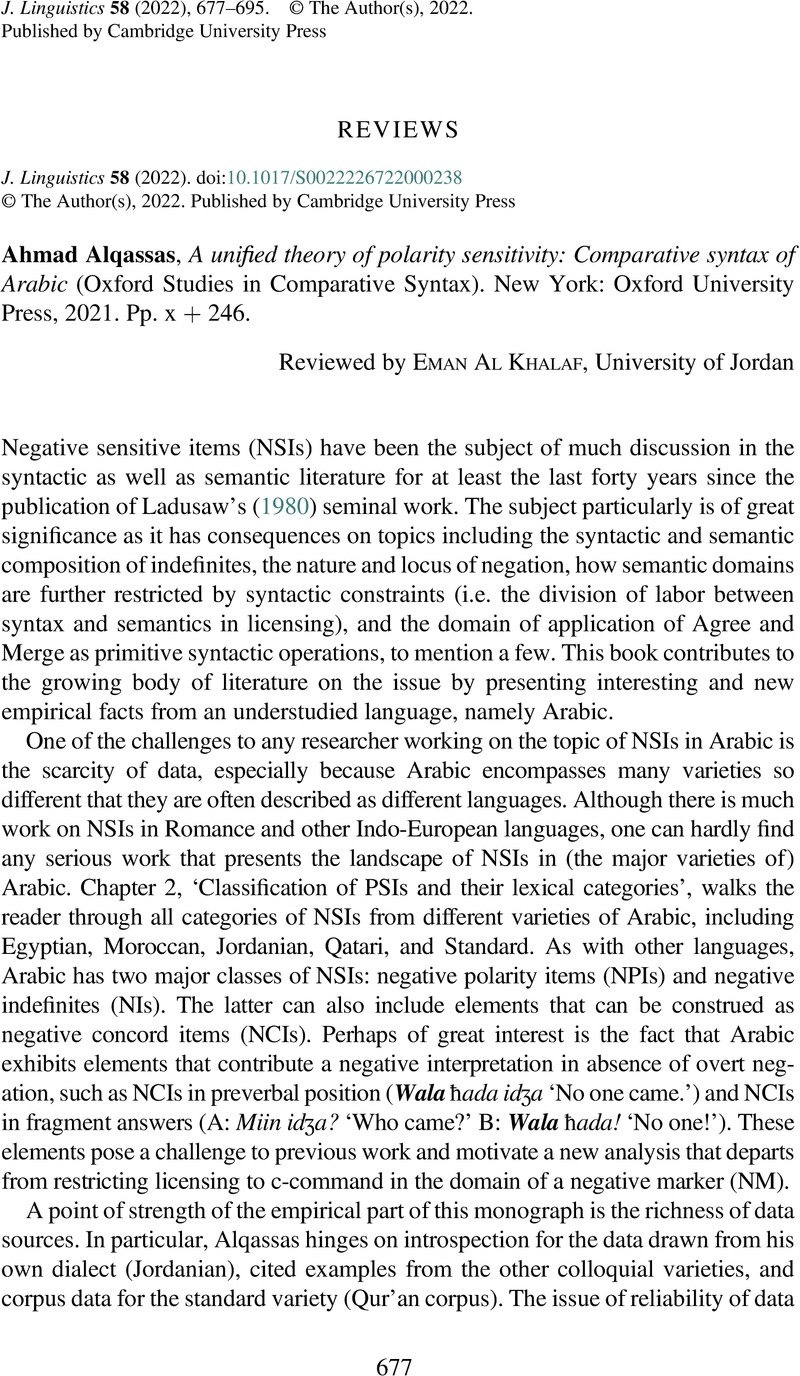Crossref Citations
This article has been cited by the following publications. This list is generated based on data provided by Crossref.
Al-Bataineh, Hussein
and
Saeed, Sameerah Tawfeeq
2024.
The syntax of negative polarity items in Central Kurdish.
Cogent Arts & Humanities,
Vol. 11,
Issue. 1,




